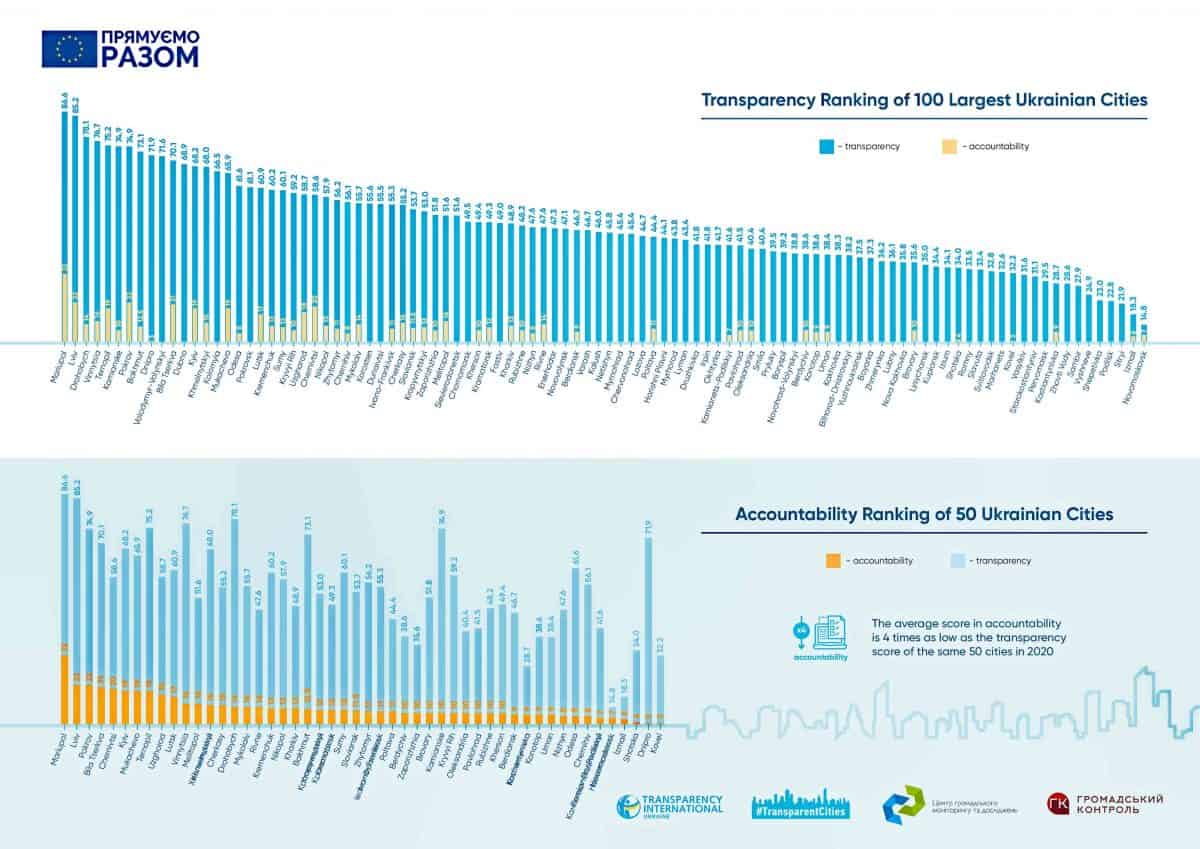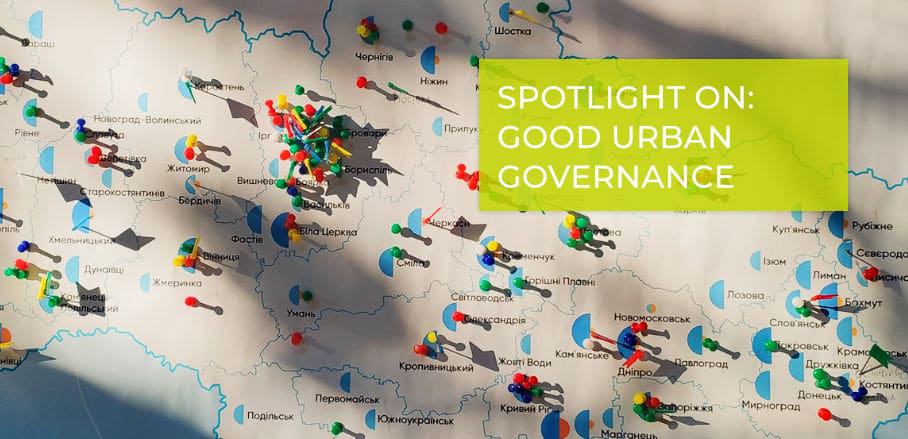Transparent and Accountable: Ukrainian Cities Fight for Openness
Local authorities often perceive publishing information about their activities as a tedious responsibility. But Ukrainian cities prove that digital openness is a chance for rising investments, growth of trust, and increased human resources. By Olena Ogorodnik from Transparency International Ukraine
Almost 70 per cent of the Ukrainian population lives in cities, with over 18 million living in the 100 biggest cities. More than a third of citizens have personal contact with local government agencies each year, and an even larger percentage engage with them in writing or online. From communicating about receiving subsidies to getting licences for starting their own business, as in every country, citizens in Ukraine depend heavily on their local authorities.
Since 2014, the process of decentralisation has been taking place in Ukraine. Greater authority and financial powers were delegated from state agencies to local government agencies. Cities gained a great boost for urban development — in 2018 alone, the revenues of the biggest cities reached 235 billion hryvnias, which amounts to 7.5 billion Euros.
However, resource growth also entails increased corruption risks. While more attention is given to transparency provisions for government agencies at the national level, local government agencies should not be ignored.
Transparency Is No Longer Such a Dark Path for Ukrainian Cities
Four years ago, when Transparency International Ukraine first launched the Transparent Cities programme, the average level of transparency was four times lower than today. The first Transparency Ranking of the 100 biggest cities highlighted the challenges cities should work on first – and until now, the overall transparency score grew by almost 60 per cent. According to Transparency Ranking 2020, the city of Mariupol became the leader, scoring 86.6 points. Runner-up was Lviv with 85.2 points. What is behind the improvement?
Both city councils developed a system of electronic registration of housing applications, ensured the publication and completeness of data on municipal housing, published announcements of all meetings of the public commission on housing and the minutes of their results.
Furthermore, in 2020, 93 cities out of 100 provided parents with the opportunity to apply for their child’s enrolment in kindergarten or school online. Most cities also offer a digital waiting list for distributing children to preschool institutions. More improvements can be observed in the areas of social services and land use and construction policy, in particular, due to the introduction of new electronic tools for submission and tracking of applications for services in social institutions.
Transparency Opens New Opportunities for City Development
Thus, we can observe that digital openness is correlated with a lower risk for corruption. The community can also see now whether taxes are being spent properly, how positions in the city government are being replaced, and what city decisions are being made.
Greater openness is beneficial for cities in every way. On average, increasing the city’s transparency by 1 point contributes to a 0.04 per cent increase in investment. Thanks to high transparency rates, Mariupol attracted almost 200 million euros of investment — the money was designated for modernising water supply, outdoor lighting, and modernisation of municipal transport.
The cities of Drohobych (78.1 points), Vinnytsia (76.7 points), and Ternopil (75.2 points) are also included in the Top 5 of the Transparency Ranking. Volodymyr-Volynskyi, a small city located in Volyn Oblast, rose by 27 positions to reach the top 10.
What do these results mean in practice? The level of city transparency does not depend on size or region. The main factor in implementing the changes is the proactive position of local governments and active citizens.
Is Transparency Truly Enough?
Many indicators in the Transparency Ranking concern adopting regulatory acts. However, formal transparency is not always supported by practical transparency. Whereas transparency can be assessed by the adoption of different rules and regulations, actual practical compliance is a different story.
For example, local governments state that citizens have unhindered access to the commission meetings. Still, there are obstacles in accessing those meetings. To determine how open local councils are to public scrutiny, we created the Accountability Ranking of 50 Ukrainian cities.
The results of the first accountability assessment show a severe gap between the more formal requirements (disclosure of data, ensuring the operation of the website), on which the transparency assessment is mainly based, and the practical openness of local self-government bodies’ activities (admission to meetings of bodies, establishing a dialogue with society, reporting).
The average accountability score is four times lower than that for transparency (12.5 points versus 54.4). Mariupol and Lviv once again lead the ranking, but their score is 32 and 22 points respectively, and that is out of 100. This is not even close to half the points.

We can witness that publication of data on the city council website, or the adoption of official regulations, does not automatically translate into greater transparency of local authorities. City residents expect more from their local governments, and the government fails to deliver. To meet these expectations, city councils must demonstrate political will, a desire to improve and become more open to the community.
Societal Demand for Openness and Accountability
Accountability means a real opportunity for citizens to be involved in and influence policy-making processes, as well as control and inspect the performance of local governments, while the latter are obliged to report publicly on their activity.
Given that communities have the most reliable information about what is happening in their cities, it would not make sense to assess accountability without them. The challenge for our team was how to involve the public in developing their cities, and how to make the dialogue with the government as constructive as possible. A simple tool was needed to record practical cases where accountability is questionable or, conversely, where considerable progress is observed. Therefore, we created the Transparent Cities online platform.
Thanks to the online platform, registered users can leave detailed feedback on the realisation of indicators and add supporting materials (documents, photos, audio, videos, links). Civil society organisations (CSOs) can verify and publish feedback in their personal accounts, and municipal representatives can respond to feedback and communicate with residents. So far, thirty city councils have registered their accounts. Forty CSOs have expressed a desire to join the community. Such interest implies that cities require openness not on paper, but in real life!
On our part, we continue to provide support, make expert recommendations, and highlight the challenges that a city should work on first – for accountable, transparent, and prosperous Ukrainian cities.
- Transparent and Accountable: Ukrainian Cities Fight for Openness - 2. September 2021
